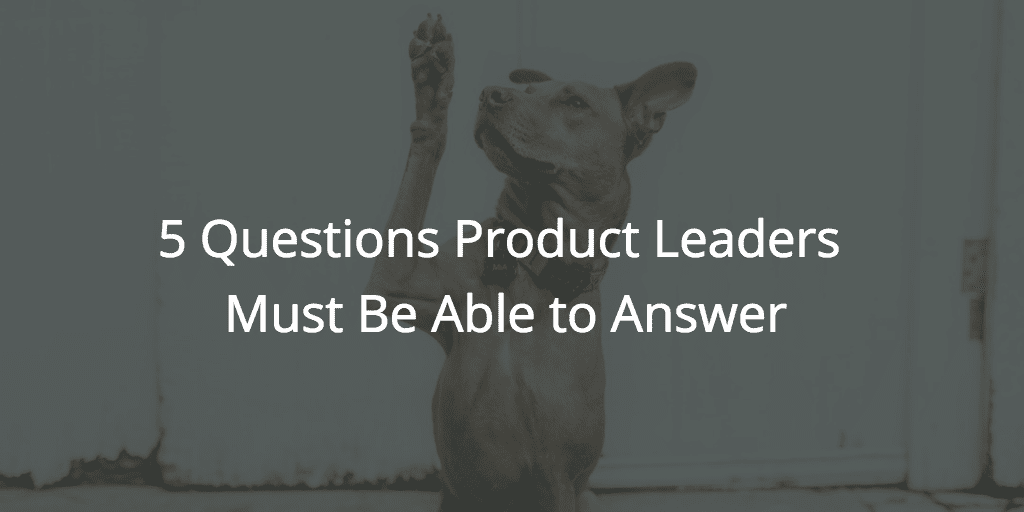So you think you know your product… but just how deeply do you understand the value it provides?
As a product leader, you’re the subject matter expert when it comes to your product. But as we all soon learn, the product is only part of the job. Understanding how your product fits into broader business goals is just as important. The following five questions will help you discover your weak spots and realign your product around customer and business needs alike.
What problem(s) does our product solve?
This can feel like a loaded question. At first glance, the answer should be obvious, but the reason behind this question is to force you to define and understand your Ideal Customer Profile (ICP) and the variety of people (personas) that use your product.
Take Marketo for example. There were a number of different personas that interacted with our product every day. Demand Generation, Sales, Marketing Ops, and Marketing Data Analysts. Each of these personas were trying to address different problems with Marketo. They used different aspects of the product with different frequency. Products leaders must understand the problems of each user/persona, what alternatives are available to address those problems, and the unique ways your product solves them.
To get this deeper level of understanding, you need access to robust analytics. Tracking a customer’s journey through your product will help you see how each persona moves through your product. With this type of path analysis, you’ll better understand how different types of users utilize your features and adopt your product.
What is our North Star Metric?
For any product to be successful, it must deliver value to your customer. This also means that if your end user is different than your buyer—perhaps you sell a solution to schools that allow teachers to create work orders—you must deliver value to the school and the teachers. On the other side of things, your product also is obligated to provide internal value as well. A North Star Metric (NSM) strings these together.
In today’s connected world, we are blessed and cursed with data. We track and collect but we can get drowned in the details. Thus the need for an NSM. This metric (or a couple metrics, if need be) will clearly indicate that your product is delivering the value that is expected of it. Often times, NSMs are confused with other important metrics such as user retention, Monthly Active Users (MAU) or Daily Active Users (DAU). Don’t let yourself default to these as your NSM should be associated as closely as possible with the value a customer receives from your product. For example, AirBnB’s NSM is “number of nights booked” and Medium’s is “amount of time spent reading.” To know if you’ve got your NSM right, monitor the relationship between NSM and Customer Lifetime Value (CLV).
What are the top reasons customers buy our product?
Early in my career, I had an “if you build it, they will come” mentality. I believed customers bought from my company because of a feature our team had created. I’ve learned over time that a product’s capability is but one part of the equation. Messaging, positioning, and timing all have a role to play in a purchase decision.
In my previous product roles, it was enlightening to hear all the different reasons why customers ultimately went with our product. Sometimes customers bought my product because they had a bad experience with a competitive offering. Sometimes it was because they had bought into the future direction of the company. Sometimes they had used our product at their previous company and wished to buy again. Whatever their reason, it’s important to capture it.
Knowing the “why” behind your customer’s purchasing decisions can help you prioritize future product investments that drive new customer acquisition. This information can also help you identify value gaps; when new customers expect something different than what your product can actually deliver on. Sitting with your sales team and performing win/loss analysis are all good methods to get this information.
What are the top reasons customers stop using our product?
For any recurring revenue business, keeping customers longer and expanding the value you deliver to them is critical. I mentioned earlier the value gap that occurs when the current state of your offering doesn’t meet customer expectations. In an ideal world, value gaps wouldn’t exist, but our world is far from ideal. Expectations, ownership, and product direction can change at the drop of a hat. There are many reasons why this happens and our job as product leaders is to understand why and to prioritize solutions to address this gap.
Working closely with your customer success (CS) team and speaking with customers at all stages is one of the best ways to get detailed reasoning behind their actions. When CS and product keep an open line of communication, this information is much easier to access. Having a solution that lets you see account and user level NPS, adoption rates, activity, and other analytics will enable you to be proactive and identify churn risks before it’s too late.
How are our product investments and roadmap aligned with our business objectives?
Gone are the days of “on-time feature delivery” as a measure of a product leader’s success. You now have to back up your product investments with proof that they achieved (or didn’t achieve) the desired objective. Not all product investments have a direct correlation to revenue but that doesn’t mean you’re off the hook for setting goals and measuring success. For each of your roadmap investments, you need to state the anticipated business impact. Forecasting impact can be challenging and uncomfortable, but having a hypothesis and desired goal will help you prioritize your roadmap relative to business objectives. If you’re prioritizing features that will improve the existing product capabilities, but your product needs a clearer differentiation to acquire new customers, you’re going to have a difficult time justifying those decisions. Setting goals for each product investment will also help you understand if the investment is considered a success.
State business impact when you can and define leading metrics of success when you can’t. Adoption, Customer Satisfaction (CSAT), and Customer Effort Score (CES) are good leading indicators for successful product investments.
So, how did you do?
Time moves fast, so make time to revisit these questions periodically to keep your strategies aligned and on the right path. What questions do you ask yourself and your team to ensure your product is consistently delivering value?

